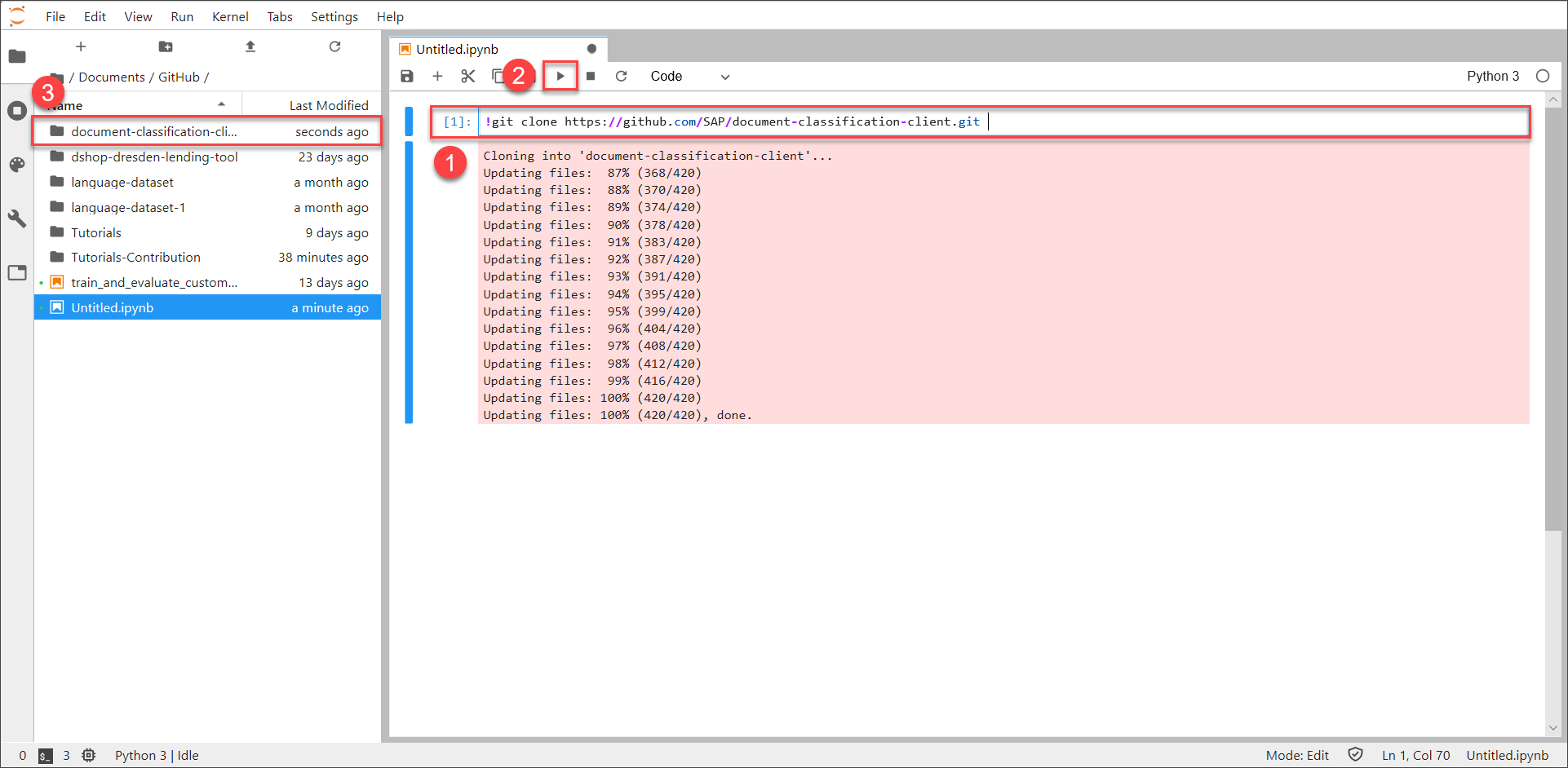Set Up Jupyter Notebook and Client Library for Document Classification
Requires Customer/Partner License
Beginner
20 min.
Set up a local JupyterLab instance as well as the Jupyter Notebook and the client library for Document Classification.
You will learn
- How to install Python and Anaconda
- How to set up a local JupyterLab instance
In order to give you a head start, a client library for the Document Classification service is available. The library already has all necessary operations implemented and ready to use, like, for example, Creating a Dataset and Training a Model. The client library can be found here.
Additionally, a Jupyter Notebook is used in the following tutorials to make the steps interactive and easy to follow. For more information on Jupyter Notebooks, see Jupyter. The notebook that was created for this tutorial mission is also available in the client library repository.





